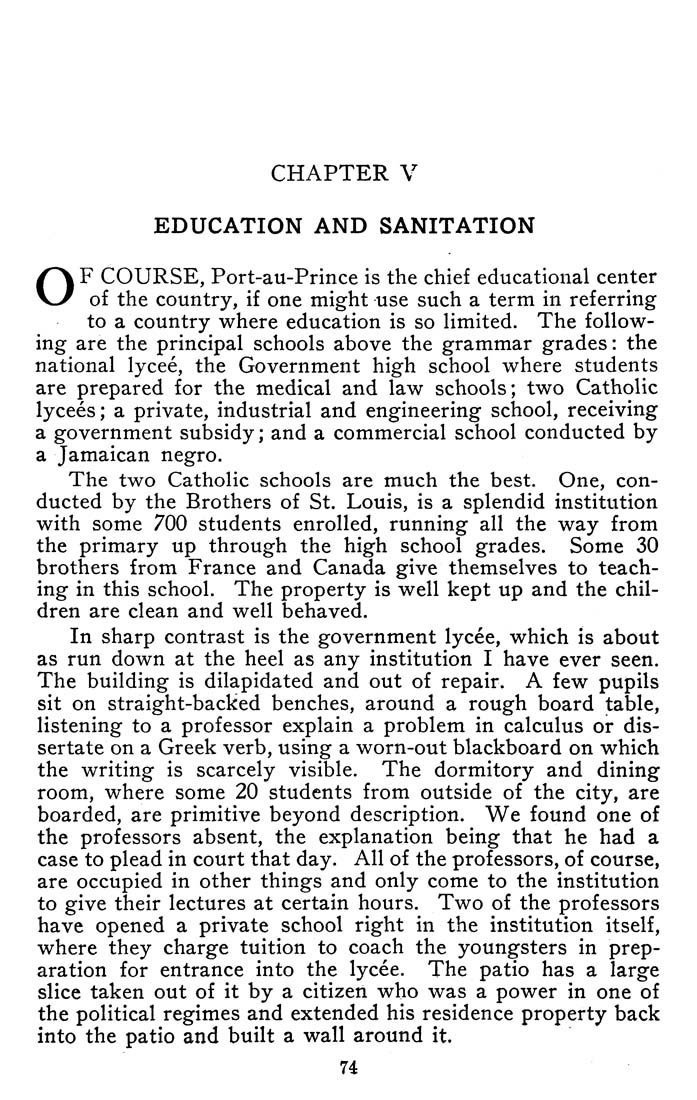CHAPTER V
EDUCATION AND SANITATION
OF COURSE, Port-au-Prince is the chief educational center
of the country, if one might use such a term in referring
to a country where education is so limited. The follow¬
ing are the principal schools above the grammar grades: the
national lycee, the Government high school where students
are prepared for the medical and law schools; two Catholic
lycees; a private, industrial and engineering school, receiving
a government subsidy; and a commercial school conducted by
a Jamaican negro.
The two Catholic schools are much the best. One, con¬
ducted by the Brothers of St. Louis, is a splendid institution
with some 700 students enrolled, running all the way from
the primary up through the high school grades. Some 30
brothers from France and Canada give themselves to teach¬
ing in this school. The property is well kept up and the chil¬
dren are clean and well behaved.
In sharp contrast is the government lycee, which is about
as run down at the heel as any institution I have ever seen.
The building is dilapidated and out of repair. A few pupils
sit on straight-backed benches, around a rough board table,
listening to a professor explain a problem in calculus or dis¬
sertate on a Greek verb, using a worn-out blackboard on which
the writing is scarcely visible. The dormitory and dining
room, where some 20 students from outside of the city, are
boarded, are primitive beyond description. We found one of
the professors absent, the explanation being that he had a
case to plead in court that day. All of the professors, of course,
are occupied in other things and only come to the institution
to give their lectures at certain hours. Two of the professors
have opened a private school right in the institution itself,
where they charge tuition to coach the youngsters in prep¬
aration for entrance into the lycee. The patio has a large
slice taken out of it by a citizen who was a power in one of
the political regimes and extended his residence property back
into the patio and built a wall around it.
74
|








